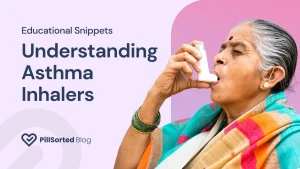How to Perform a Head Lice Check: Step-by-Step Guide

Do you suspect that you, your patient, or someone in your home has head lice or has been in close contact with someone with lice? Then it’s time to perform a proper head lice check. In this step-by-step guide, we’ll walk you through the process of performing a thorough head lice check. Whether you’re a parent, caregiver, or an individual concerned about lice, following these steps can help you on your way to achieving a lice-free head.
In this post:
- Head lice basics
- Step-by-step head lice guide
- Lice dos & don’ts
- Head lice treatment
- Head lice medicine toolkit
Head lice basics
There are few basics about head lice that you should know about before we jump into the guide. Lice are insects, not disease-bearing bacteria or viruses. They are a global phenomena, and there is no shame in getting lice. Contrary to popular belief, lice is not a sign of poor hygiene—head lice have no preference between clean and dirty hair. And while lice is most common among children 5 to 13 years old, anyone can get head lice at any age through head-to-head contact.
Anyone can get headlice at any age.
Step-by-step head lice check
Step 1: Gather your tools
To do a head lice check, you’ll need to be in a well-lit area, have around 30 minutes of free time, and the following items:
- Fine-toothed lice comb
- Magnifying glass
- Disposable gloves (optional)
- Two mirrors facing each other (if you have to check yourself for lice)
- Spray bottle of water or a glass with water to dip you comb into
Step 2: Wet the hair
Dampen the hair with water or a detangling spray. Wet hair makes it easier to comb through and can help reveal any stubborn lice or nits (lice eggs). Remember lice cannot fly or jump, so as long as you don’t make direct head-to-head contact you don’t have to worry about infecting yourself.
Step 3: Section the hair
Divide the hair into manageable sections. Use hair clips or ties to keep the sections separate. This makes it easier to inspect each part thoroughly.
Step 4: Start combing
Take the fine-toothed lice comb and begin combing through small sections of the hair close to the scalp. You can use a regular comb to do your lice check if you don’t have a lice comb. But once you determine that lice are present, you will need a fine-toothed comb to make the removal process far faster and easier.
Comb from the hair roots all the way to the ends. Wipe the comb on a tissue or paper towel after each stroke. Lice cannot live more than 24 hours once removed from a human host, so simply throw or flush the paper with the lice when you are done.
Lice cannot live beyond 24 hoursonce removed from a human host.
Step 5: Check for nits & lice
Nits are tiny, white, oval-shaped eggs that are often attached to the hair shaft near the scalp. While combing, pay special attention to the areas behind the ears, at the nape of the neck, and on the crown of the head – these are common areas where lice and nits are found. Use a magnifying glass to help you.
Look for adult lice as you comb through the hair. Adult lice are small, yellow or brownish insects about the size of a sesame seed. They move quickly, so be ready to observe combed area right away after combing aside a section of hair.
If you didn’t find lice or nits in your hair, you may simply have dandruff or another scalp issue such as cradle cap, psoriasis, or ringworm. Consult with your physician to be sure for a diagnosis and to get the right treatment.
Step 6: Repeat the process
Continue combing through each section of the hair until you’ve checked the entire head. Be thorough and patient, ensuring that you cover all areas. As mentioned earlier, don’t forget behind the ears, at the nape of the neck, and the crown of the head.
Step 7: Clean the comb
After completing the head lice check, clean the comb thoroughly. This helps prevent the transfer of lice or nits to other individuals. To clean the comb, wash the nits down the drain with hot, soapy water. Then put the comb in the dishwasher to kill remaining lice during the extended hot cycle, or put your brush in alcohol for 1 hour. This is a good method for cleaning any other combs or brushes you have in the house as well.
Step 8: Clean the house
Wash bed sheets, stuffed animals, hoodies and hats with hot, soapy water and dry them at high heat in the dryer. Direct sunshine does not kill them unfortunately. Vacuum the floor and furniture, and throw away the vacuum bag when you are finished.
Lice Dos & Don’ts
| Do | Don’t |
|---|---|
| Start at the roots | Don’t make head-to-head contact. Avoid hugging. |
| Work in small sections | Don’t use lice lotions or shampoos if you are pregnant or breastfeeding (talk to your doctor first) |
| Wet the hair | Don’t stop treatment too early |
| Use a fine-tooth comb | Don’t Confuse lice for another scalp issue |
| Clean the comb with hot water or alcohol for at least 1 hour | Don’t be ashamed you have lice |
| Clean the house, especially items that touch the head (pillows, brushes, hoodies). | Don’t scratch your head to avoid spreading and scabbing. |
| Check for lice regularly | Don’t use a hairdryer after applying scalp treatments (they can be flammable). |
Head Lice treatment
While there are several treatments for head lice, you can start right away with combing out the lice with the fine-toothed lice comb, just as you did in steps 2, 3 and 4 above. The earlier you start the easier it will be to get rid of the lice and protect others. Repeat combing every 3 to 4 days for at least two weeks.
More stubborn lice may require a lice shampoo or lotion. Check with your GP to be sure you get the right treatment for your situation, especially if you are pregnant or breastfeeding.


Hedrin 4% Lotion – 150ml
Hedrin 4% Lotion is a cutaneous solution for the treatment of head lice and their eggs in adults and children aged 6 months and over. It contains the active ingredient dimethicone, a silicone-based substance that physically coats and suffocates the lice and their eggs, without the use of insecticides. The lotion is skin friendly, odourless and easy to apply.
Main takeaways
- Lice are insects that can infect anyone at any age.
- The sooner you check for lice the better your chances of treating it and protecting others.
- Look for lice and nits (lice eggs) at hair roots, around the ears and the nape of the neck.
- Clean your lice comb and home thoroughly with soap, hot water and hot air.
- Sunlight does not kill lice.
References
Salehi, S., et al (2014). A Study of Head Lice Infestation (Pediculosis Capitis) among Primary School Students in the Villages of Abadan in 2012
Mahmood, M., et al (2015). Prevalence of Head Lice Infestation and Its Associated Factors among Primary School Students in Iran: A Systematic Review and Meta-analysis
Cochrane Infectious Diseases Group (2022). Interventions for treating head lice: a network meta‐analysis
PillSorted
PillSorted is a full service pharmacy that delivers trusted pharmacy products, over-the counter medications, and the prescriptions your doctor recommends, directly to your door. Your PillSorted pharmacist is happy to answer your questions about weight loss and potential treatment options at 0333 4050380 or help@pillsorted.com.

All third-party trademarks (including logos and icons) referenced by PillSorted remain the property of their respective owners. Unless specifically identified as such, PillSorted’s use of third party trademarks does not indicate or imply any relationship, sponsorship or endorsement between PillSorted and the owners of these trademarks.























